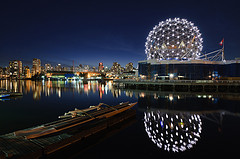Sarah Lambert about 180 words
sel15@geneseo.edu
Student, INTD 105-19: Scientific Writing
“The Trouble With Wilderness” Response
By Sarah Lambert
Throughout his piece written about the connotations and interpretations of the word “wilderness,” William Cronon develops the assertion that “wilderness” is not entirely wild, “it is quite profoundly a human creation-indeed.”
This awesome, other-worldly “wilderness” attracted many. Cronon exemplifies other’s views by quoting multiple writers who have described nature with powerful allusions to religion and God’s presence because of the way it struck awe into the hearts of men. Attitudes towards it shifted from bewilderment and distaste to admiration and reverence which caused people to preserve them as national parks. The national parks, as Cronon points out, have provided us with a false sense of security that the wild is still there to be “our true home” while in fact, it is just a false dichotomy. Cronon summarizes by stating that these parks are “standing for…wild freedom…and seeming to represent a highly attractive natural alternative,” an alternative to civilization whereas it’s truly just a side effect.
Though his argument that wilderness isn’t entirely wild is intriguing, his statements do not exactly fit into my ideas about the boundaries of humanity and nature.
